
Breed Information
Italian Cane Corso Dog
Group: Utility
Size: Large
Lifespan: 12 years plus
Exercise: low-medium
Grooming: low
Trainability: high
Watchdog ability: very high
Protection ability: very high
Area of Origin: Italy
Date of Origin: ancient times
Other Names: Italian Mastiff Cane Corso, Cane Corso Italiano
Original Function: Watchdog, protection, police and tracking
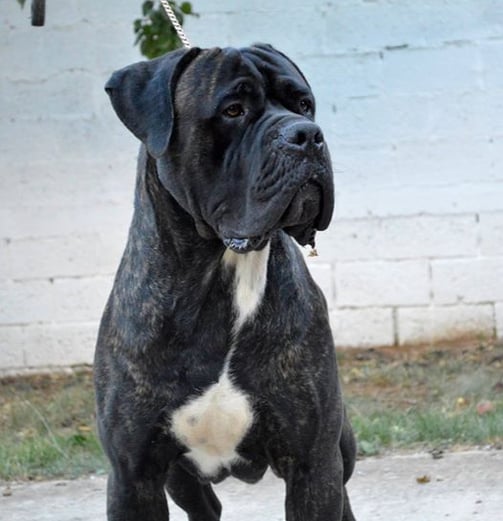

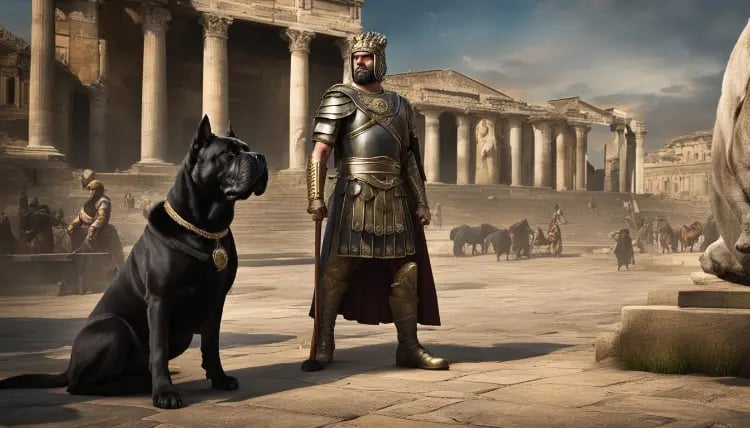

History and Origins
The Cane Corso is a direct descendant of the ancient Roman Molossian, a powerful war dog used by the Roman legions for battle, guarding, and hunting. As the Roman Empire declined, the breed evolved into a versatile working dog, protecting farms, hunting large game, and assisting in livestock management.
Historically, the Cane Corso was found throughout Italy, but in modern times, its presence became more concentrated in Apulia and the southern regions of Italy. The name "Cane Corso" originates from the Latin word "Cohors," meaning guardian or protector of the farmyard, reflecting its deep-rooted history as a loyal and fearless defender.
Today, the Cane Corso is recognized as a highly intelligent, protective, and athletic breed, excelling in roles such as guarding, law enforcement, search and rescue, and personal protection.
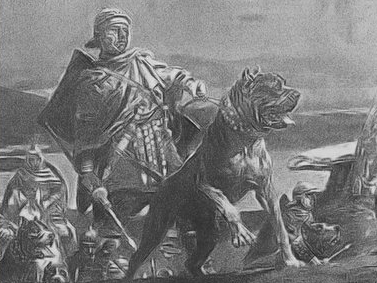

Official Breed Standard
General Appearance
The Cane Corso is a medium to large-sized Molosser with a robust, muscular, and athletic build. Despite its power, the breed maintains an elegant and agile movement, allowing it to perform various working tasks efficiently.
Key Proportions
The length of the head should be 36% of the height at the withers.
The dog is slightly longer than it is tall, contributing to a well-balanced physique.
Temperament & Personality
The Cane Corso is known for its strong protective instincts, intelligence, and devotion to its family. This breed is deeply loyal, courageous, and highly trainable when handled by experienced owners. Historically, they were used for:
✔ Guarding property and livestock
✔ Protecting families
✔ Tracking and hunting big game
Although they are naturally reserved with strangers, a well-socialized Cane Corso is confident, stable, and not unnecessarily aggressive.

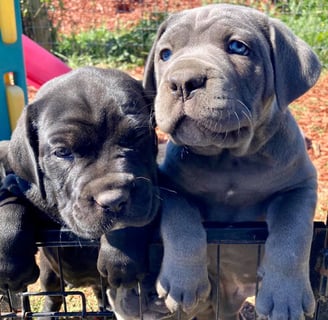
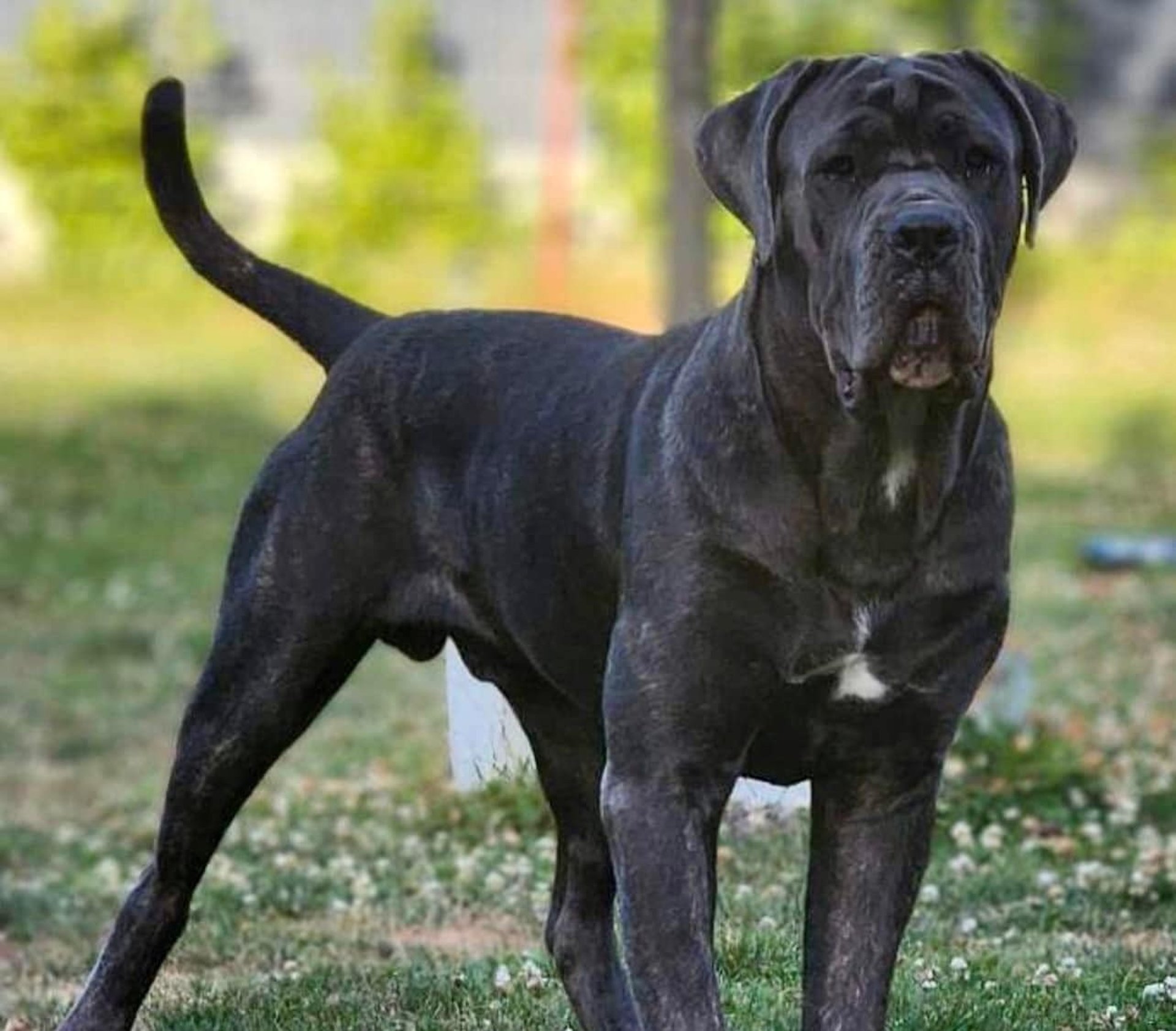
Head & Skull
✔ Large, square-shaped head with a slightly converging skull and muzzle.
✔ Wide skull, especially at the zygomatic arches (cheekbones).
✔ Flat forehead with a noticeable medio-frontal furrow.
✔ Strong, broad muzzle, approximately one-third the total head length.
✔ Black, well-developed nose with open nostrils aligned with the nasal bridge.
Eyes
✔ Medium-sized, oval, and forward-facing, giving an intelligent and alert expression.
✔ Dark-colored iris, depending on the coat color.
Ears
✔ Triangular and naturally drooping, set high above the zygomatic arches.
Mouth & Jaws
✔ Strong, thick, and well-developed jaws.
✔ Slightly undershot bite is standard, but a level bite is acceptable.
Neck
✔ Strong, muscular, and proportionate to the head’s length.
Body Structure
✔ Back: Straight, firm, and well-muscled.
✔ Withers: Prominent, slightly higher than the croup.
✔ Chest: Deep and broad, reaching the elbows.
✔ Croup: Slightly sloping, long, and wide.
✔ Loins: Short, compact, and powerful.
Forequarters & Hindquarters
✔ Forelegs: Straight, muscular, and powerful.
✔ Hindquarters: Strong, with well-developed upper and lower thighs.
✔ Hocks: Well-angulated for efficient movement.
Feet & Movement
✔ Compact "cat feet" in the front, slightly less compact hind feet.
✔ Long, fluid strides with an extended, effortless trot.
Tail
✔ Set high and thick at the root.
✔ Docked at the fourth vertebra (where legal).
✔ Carried high when alert but never curled or vertical.
Physical Characteristics
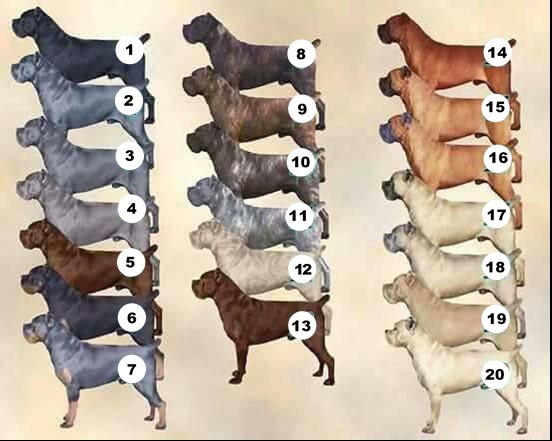

Short, dense, and glossy coat with a light undercoat.
Recognized Colors:
Black
Lead Grey
Slate Grey
Light Grey
Fawn (light & dark)
Stag Red
Brindle (Fawn or Grey striped patterns)
A black or grey mask should not extend beyond the eyes.
Small white patches on the chest, feet, or nose are acceptable.
Coat & Colors
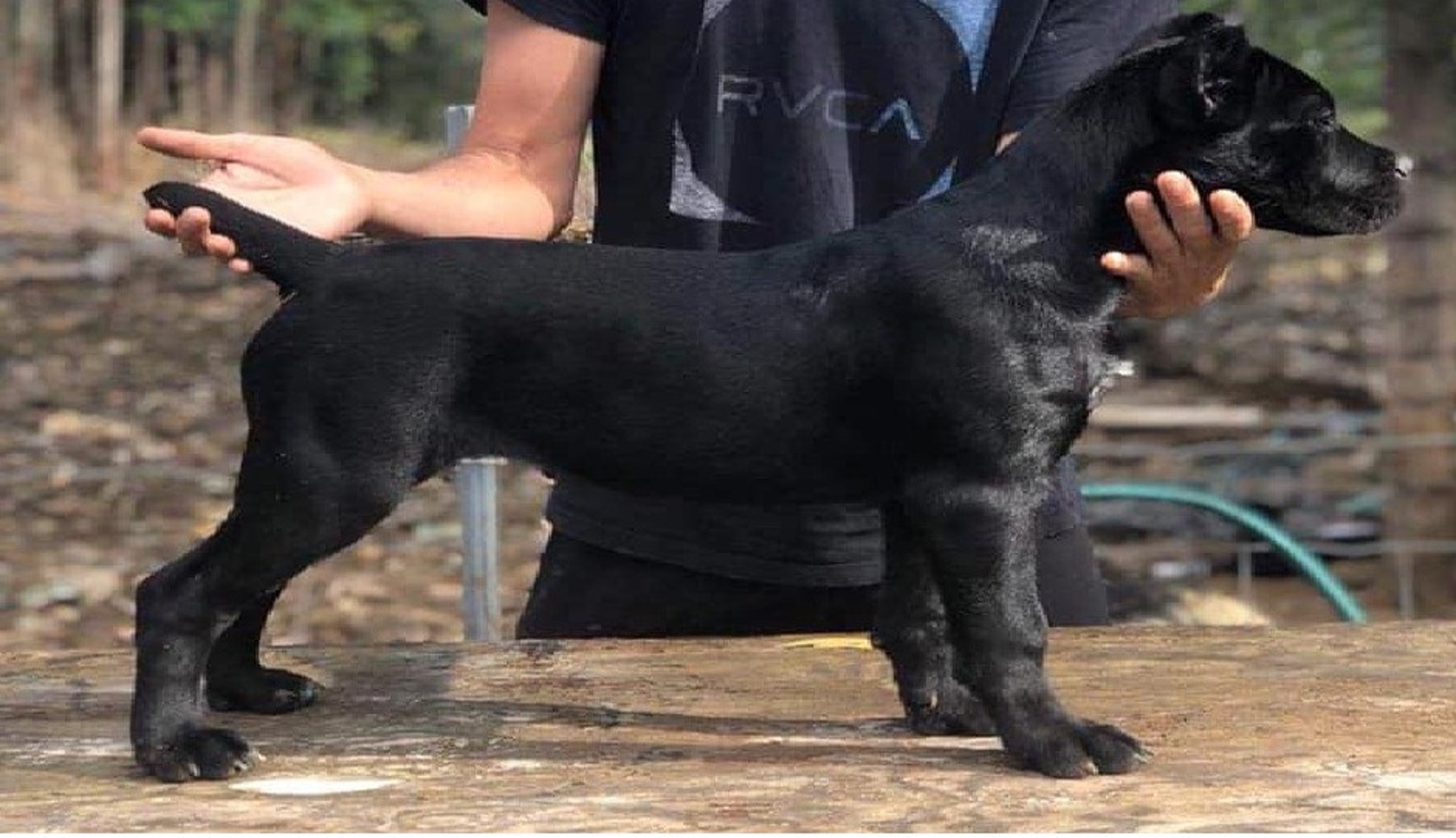
Size & Weight
Cane Corsos are a large and powerful breed with well-balanced proportions.
Males typically stand between 64 to 68 cm (25 to 27 inches) at the withers and weigh 45 to 50 kg (99 to 110 lbs).
Females are slightly smaller, measuring 60 to 64 cm (24 to 25 inches) in height and weighing 40 to 45 kg (88 to 99 lbs).
A slight variation of up to 2 cm in height is acceptable within the breed standard.
Common Breed Faults
Serious Faults
❌ Parallel or overly converging skull and muzzle axis.
❌ Depigmentation of the nose.
❌ Scissor bite or extreme undershot bite.
❌ Ring tail or curled tail.
❌ Permanent ambling gait (instead of a trot).
❌ Under or oversized dogs.
Very Serious Faults
❌ Diverging skull and muzzle axis.
❌ Completely depigmented nose.
❌ Severely concave or convex nasal bridge.
❌ Extreme overshot bite.
❌ Wall eyes or squinting.
❌ Short or absent tail (unless legally docked).
❌ Long, wavy, or fringed coat.
❌ Unapproved coat colors or excessive white markings.